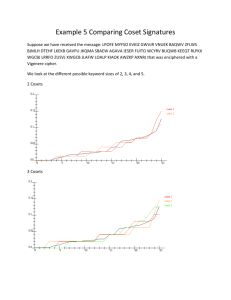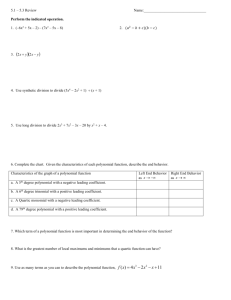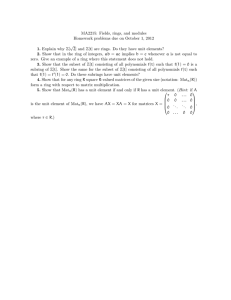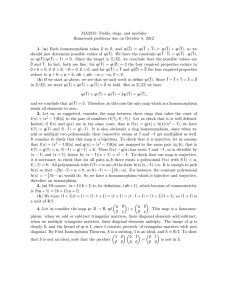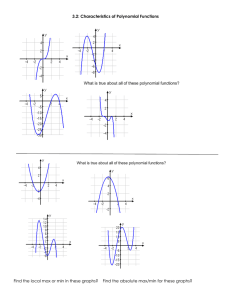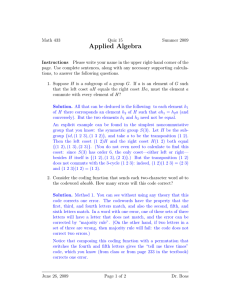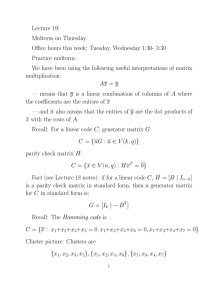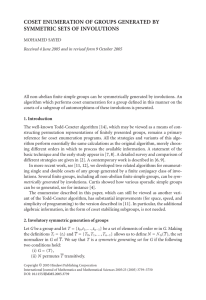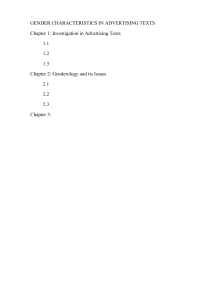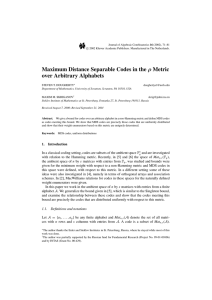MA2215: Fields, rings, and modules → Mat
advertisement
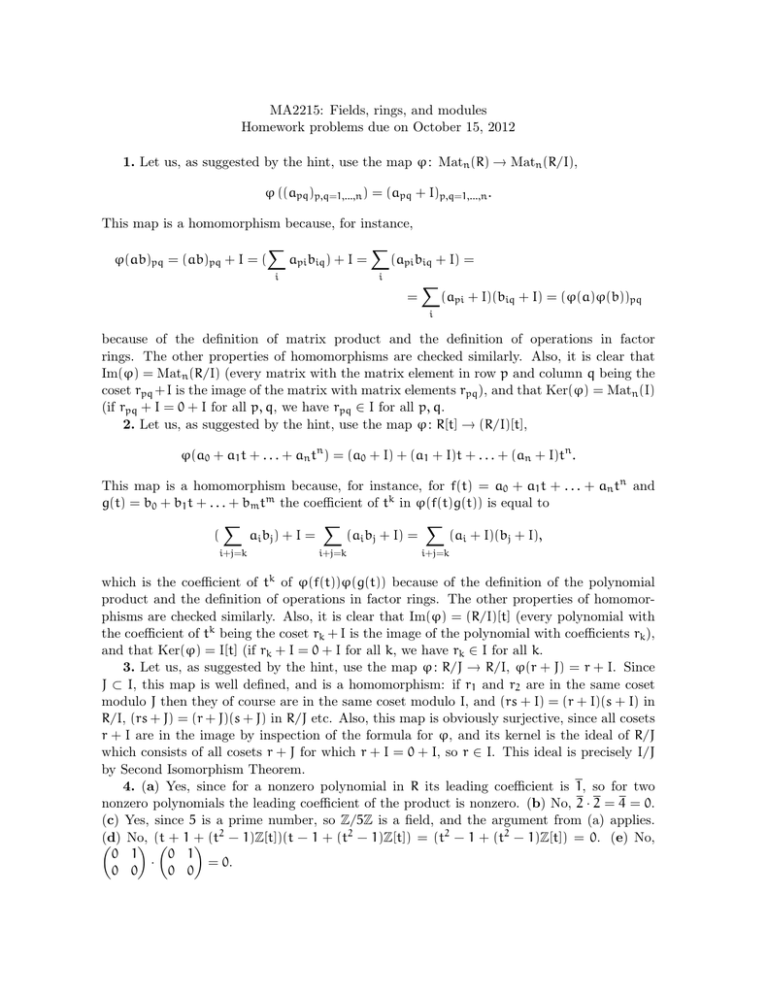
MA2215: Fields, rings, and modules Homework problems due on October 15, 2012 1. Let us, as suggested by the hint, use the map ϕ : Matn (R) → Matn (R/I), ϕ ((apq )p,q=1,...,n ) = (apq + I)p,q=1,...,n . This map is a homomorphism because, for instance, X X ϕ(ab)pq = (ab)pq + I = ( api biq ) + I = (api biq + I) = i i = X (api + I)(biq + I) = (ϕ(a)ϕ(b))pq i because of the definition of matrix product and the definition of operations in factor rings. The other properties of homomorphisms are checked similarly. Also, it is clear that Im(ϕ) = Matn (R/I) (every matrix with the matrix element in row p and column q being the coset rpq +I is the image of the matrix with matrix elements rpq ), and that Ker(ϕ) = Matn (I) (if rpq + I = 0 + I for all p, q, we have rpq ∈ I for all p, q. 2. Let us, as suggested by the hint, use the map ϕ : R[t] → (R/I)[t], ϕ(a0 + a1 t + . . . + an tn ) = (a0 + I) + (a1 + I)t + . . . + (an + I)tn . This map is a homomorphism because, for instance, for f(t) = a0 + a1 t + . . . + an tn and g(t) = b0 + b1 t + . . . + bm tm the coefficient of tk in ϕ(f(t)g(t)) is equal to X X X ( ai bj ) + I = (ai bj + I) = (ai + I)(bj + I), i+j=k i+j=k i+j=k which is the coefficient of tk of ϕ(f(t))ϕ(g(t)) because of the definition of the polynomial product and the definition of operations in factor rings. The other properties of homomorphisms are checked similarly. Also, it is clear that Im(ϕ) = (R/I)[t] (every polynomial with the coefficient of tk being the coset rk + I is the image of the polynomial with coefficients rk ), and that Ker(ϕ) = I[t] (if rk + I = 0 + I for all k, we have rk ∈ I for all k. 3. Let us, as suggested by the hint, use the map ϕ : R/J → R/I, ϕ(r + J) = r + I. Since J ⊂ I, this map is well defined, and is a homomorphism: if r1 and r2 are in the same coset modulo J then they of course are in the same coset modulo I, and (rs + I) = (r + I)(s + I) in R/I, (rs + J) = (r + J)(s + J) in R/J etc. Also, this map is obviously surjective, since all cosets r + I are in the image by inspection of the formula for ϕ, and its kernel is the ideal of R/J which consists of all cosets r + J for which r + I = 0 + I, so r ∈ I. This ideal is precisely I/J by Second Isomorphism Theorem. 4. (a) Yes, since for a nonzero polynomial in R its leading coefficient is 1, so for two nonzero polynomials the leading coefficient of the product is nonzero. (b) No, 2 · 2 = 4 = 0. (c) Yes, since 5 is a prime number, so Z/5Z is a field, and the argument from (a) applies. 2 2 2 2 (d) No, (t + 1 + (t − 1)Z[t])(t − 1 + (t − 1)Z[t]) = (t − 1 + (t − 1)Z[t]) = 0. (e) No, 0 1 0 1 · = 0. 0 0 0 0
